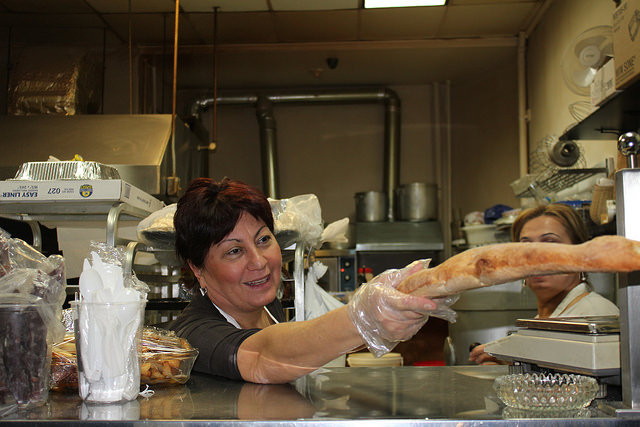Researchers at Babson and Baruch Colleges count 24 million American Entrepreneurs – among the highest level in the developed world; job creation and optimism rise; fear of failure declines.
 Twenty-four million U.S. entrepreneurs, or 14 percent of the population, are invigorating the American economy according to the 2014 Global Entrepreneurship Monitor (GEM) U.S. Report issued today by Babson College and Baruch College. This is the highest rate ever recorded in the United States.
Twenty-four million U.S. entrepreneurs, or 14 percent of the population, are invigorating the American economy according to the 2014 Global Entrepreneurship Monitor (GEM) U.S. Report issued today by Babson College and Baruch College. This is the highest rate ever recorded in the United States.
Job creation outlook rose eight percentage points from 2013, with 24 percent of U.S. entrepreneurs projecting to hire 20 or more people in the next five years. Optimism about entrepreneurship is stronger than ever as more than half the U.S. population (51 percent) reported seeing good opportunities for starting businesses.
Fear of failure, which measures one’s willingness to take risks in starting a business, decreased to 30 percent from a high of 32 percent in 2012.
“The results show a high level of current activity accompanied with high optimism about the future,” commented Babson College Professor of Entrepreneurship Donna Kelley, the GEM Report’s lead author. “Entrepreneurial growth depends on people who see opportunities and have intentions to get started. The greater optimism we see in the U.S. signals high support for entrepreneurs, and the increase in job ambitions clearly indicates the potential for entrepreneurship to make major contributions to the U.S. economy.”
The report, which generates insights about entrepreneurship in the U.S., records entrepreneurs’ profiles, motivations, and business characteristics while documenting the societal attitudes that often shape entrepreneurial success.
This year’s report takes an in-depth look at the value of teamwork among entrepreneurs and continues to track the activity of women and both young and older entrepreneurs.
The Global Entrepreneurship Monitor is the world’s leading study of entrepreneurship. This is its 16th annual survey of entrepreneurship, providing a comprehensive look at entrepreneurship on a global level, and over time, with valuable insights for academics, policy makers, educators, and practitioners.
The GEM U.S. Report is authored by Babson professors Donna J. Kelley, Abdul Ali, Candida Brush, Andrew C. Corbett, Caroline Daniels, Phillip Kim, and Mahdi Majbouri, and Baruch College professors Thomas Lyons, andEdward G. Rogoff.
Key Findings
The U.S. continues to lead in entrepreneurship activity
- Entrepreneurship levels among the U.S. working age population edged upward to 14 percent in 2014 (an estimated 24 million Americans) – reaching the highest level recorded in the 16 years GEM has assessed entrepreneurial activity.
- 36 percent of entrepreneurs operate in the business service sector (knowledge and service-based businesses) – higher than the average of 29 percent for the 28 other innovation-driven economies that participated in the survey.
- 9.4 percent of U.S. entrepreneurs are starting medium or high-technology businesses.
- 6.5 percent are starting businesses within organizations; an indication that entrepreneurial initiatives within a larger corporate environment coexist alongside independent startups.
- Among GEM’s 29 developed economies, the U.S. recorded the highest rate of entrepreneurship among 55-64 year olds (11 percent).
- Innovation rates, or activity in the business sector and job creation, begin to decline after 55, but not substantially until the 65-74 age group.
- At 7 percent, established business activity is slightly down from a high of 9 percent in 2012. GEM suggests that this is likely the result of a drop in Total Entrepreneurial Activity (TEA) in 2009-2010, causing lower mature business activity three or more years later.
Job Creation
- 24 percent of U.S. entrepreneurs expect to employ 20 or more people in the next five years, up from 16 percent in 2013. The average for other innovation-driven economies is 10 percent.
- 20 percent of entrepreneurs aged 18-34 currently employ six or more people. 58 percent of 18-24 year olds and 46 percent of 25-34 year olds project hiring six or more employees in five years.
Positive Attitude
- Optimism is at the highest recorded level. More than half the U.S. population (51 percent) believes there are good opportunities for starting businesses.
- Fear of failure continues to edge downward to 30 percent after reaching a high of 32 percent in 2012.
- High intentions (12 percent) and nascent activity (10 percent) suggest both the presence of potential future entrepreneurs and conditions that enable people to actually take steps to get started.
Innovation and Global Reach
- 37 percent of U.S. entrepreneurs (vs. 31 percent on average among other innovation-driven economies) have products or services that are new to some or all customers, with little or no competition.
- 15 percent reported that 25 percent or more of their customers are from outside the U.S. This is an increase from the 11 percent reported in 2013, but is lower than the 21 percent on average documented in other innovation-driven economies.
Network and Teamwork
- 29 percent of U.S. entrepreneurs personally know another entrepreneur. This measure follows a downward path in networking since 2005, when 46 percent indicated any kind of exchange with other entrepreneurs.
- 55 percent of entrepreneurs start businesses alone, while 23 percent begin with three or more founders. Yet 35 percent of single founder businesses expect to have six or more employees in the next five years, while 76 percent of firms founded by three or more individuals anticipate this level of employment.
Motivated Women
- U.S. women entrepreneurs demonstrate among the highest rates of activity (11 percent) in the developed world. Increased activity among young women produced a 17 percent TEA rate among 25-34 year olds.
- Women’s participation across main industry sectors (56 percent) is relatively stagnant, with an emphasis on the consumer sector. But women are outpacing their male counterparts in terms of innovation (41 percent vs. 34 percent for men).
Photo courtesy of New Women New Yorkers [FLICKR]





Add Comment